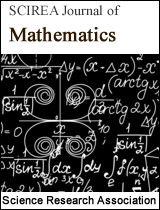From the Ideas of Edgeworth and Pareto in Exchange Economy to Multi-Objective Mathematical Programming
DOI: 333 Downloads 15090 Views
Author(s)
Abstract
In this paper we consider the first general theories of multi-objective mathematical programming. They stem from optimization techniques in economics and are attributed to the economists Francis Edgeworth and Vilfredo Pareto. We will focus our attention on these ideas from a mathematical point of view.
Keywords
optimization, multi-objective mathematical programming, Edgeworth-box, Pareto-optimal, equilibrium.
Cite this paper
Zdravko Dimitrov Slavov, Christina Slavova Evans,
From the Ideas of Edgeworth and Pareto in Exchange Economy to Multi-Objective Mathematical Programming
, SCIREA Journal of Mathematics.
Volume 2, Issue 2, April 2017 | PP. 15-27.
References
| [ 1 ] | K. Arrow, Social Choice and Individual Values, Cowles Commission for Research in Economics Monograph N:12, John Wiley and Sons, 1951. |
| [ 2 ] | M. Ehrgott, X. Gandibleux, Multi-criteria Optimization: State of the Art Annotated Bibliographic Surveys. Kluwer Academic Press, 2002. |
| [ 3 ] | M. Ehrgott, Multi-criteria Optimization. Springer, 2005. |
| [ 4 ] | M. Ehrgott, Vilfredo Pareto and multi-objective optimization. Documenta Mathematica, Extra volume: Optimization Stories, 447-453, 2012. |
| [ 5 ] | B. Ellickson, Competitive Equilibrium: Theory and Applications, Cambridge University Press, 1997. |
| [ 6 ] | A. Feldman, R. Serrano, Welfare Economics and Social Choice Theory, Springer, 2006. |
| [ 7 ] | J. Jahn, Vector Optimization: Theory, Applications, and Extensions. Springer, 2004. |
| [ 8 ] | T. Koopmans, Analysis of Production as an efficient Combination of Activities, in T. Koopmans, editor, Cowles Commission for Research in Economics Monograph N:13, John Wiley and Sons, 1951, 33-97. |
| [ 9 ] | D. Luc, Theory of Vector Optimization. Springer, 1989, |
| [ 10 ] | H. Kuhn, A. Tucker, Nonlinear programming, in J. Neyman, editor, Proceedings of the 2nd Berkeley Symposium on Mathematical Statistics and Probability, University of California Press, Berkeley, CA, 1951, 481-492. |
| [ 11 ] | M. Luptacik, Mathematical Optimization and Economic Analysis, Springer, 2010. |
| [ 12 ] | Z. Slavov, Structure of the Pareto optimality set with fixed total resources and consumption sets, Applied Mathematics and Computation 154 (2004), 75-81. |
| [ 13 ] | R. Steuer, Multiple Criteria Optimization: Theory, Computation and Application, John Wiley and Sons, 1986. |

